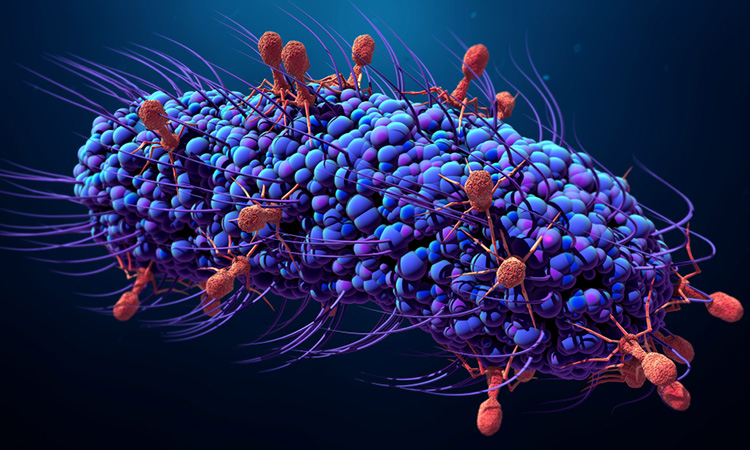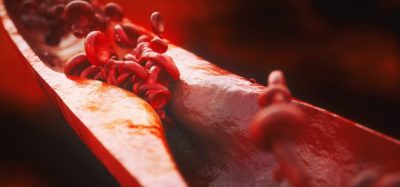ES17 phages can destroy bacteria before gut infection in mice
Posted: 10 February 2021 | Victoria Rees (Drug Target Review) | No comments yet
A study has shown that the ES17 phage binds to heparan sulphate and can target and eliminate ExPEC bacteria in animal models.


Researchers have identified a novel strategy that could eliminate bacteria in a specific location before causing an infection. The strategy uses a phage, a virus that infects and destroys bacteria, that can specifically locate in the same place the bacteria live in the gastrointestinal tract. The study was conducted at Baylor College of Medicine, US, and other institutions.
The team showed in previous work that phages can effectively treat an infection caused by antibiotic-resistant ExPEC ST131 bacteria. In this study, they wanted to see if they could use phages to remove these bacteria to prevent an infection.
The team discovered that there is a factor present in mammalian intestines that prevents phages from destroying bacteria in the gut. They identified the factor as mucin, sticky proteins that form a layer between intestinal epithelial cells and the layer of microorganisms.
The researchers reasoned that although mucins prevent many phages from infecting bacteria, there may be some that have evolved a way to counter the effect of mucins and as a result, are able to target bacteria in high-mucin environments.
“We screened human sewage and animal faeces for phages with unique properties that facilitate their ability to destroy bacteria in the presence of mucins,” said corresponding author Associate Professor Anthony Maresso. “We discovered a novel phage called ES17 that binds to mucins and this property seemed to enhance its ability to infect bacteria in mucin-rich environments, such as the gut.”
The researchers discovered that phage ES17 binds to particular molecules called heparan sulphate which can be found not only in mucins, but also on the surface of various cells types, including epithelial cells. This prompted the researchers to investigate whether binding to heparan sulphate on epithelial cells, which the researchers had also discovered is the same binding site used by ES17’s host bacteria ExPEC, would contribute to ES17’s ability to target and destroy the bacteria in the gut environment.
“We tested the effect of phage ES17 on its bacterial host ExPEC in a murine intestine, comparing it with phages known to be unable to infect their bacterial host in complex environments,” said first author of the study Dr Sabrina Green. “We found that only ES17 had the unique ability to target and eliminate ExPEC bacteria in animal models.”
The researchers say the findings suggest that the ability of phage ES17 to bind to heparan sulphate on mucin-rich surfaces and directly on mammalian epithelial cells mediates its localisation in areas deep in the gut where reservoirs of bacteria may be present. The researchers propose that being close to ExPEC bacteria facilitates phage invasion and bacterial elimination before they have the opportunity to exit the gut and infect other organs.
“Here we have shown the first phage that also binds to epithelial human cells and that this property mediates a novel mechanism for fighting bacterial infections we call positional targeting, as it enables the phage to anticipate where the bacteria it targets will be located,” Maresso said.
The study appears in the journal mBIO.
Related topics
Bacteriophages, Microbiology, Microbiome, Therapeutics
Related organisations
Baylor College of Medicine
Related people
Associate Professor Anthony Maresso, Dr Sabrina Green







